How to establish an animal model of acute pancreatitis

Acute pancreatitis (AP) is a common clinical emergency with complex etiology and a mortality rate of 5% to 10%. The mortality rate of severe AP can be as high as 20% to 30%. The pathogenesis is not fully elucidated, and there is no specific treatment available. Currently, commonly used methods for creating in vivo AP animal models include pancreatic duct ligation, duodenal loop occlusion, pancreatic duct puncture injection, injection under the pancreatic capsule, pancreatic duct injection combined with intravenous infusion, and intraperitoneal injection of caerulein combined with lipopolysaccharide in frogs.
Caerulein is a gastric regulatory molecule that functions and is composed similarly to cholecystokinin (CCK). It stimulates pancreatic acinar cells to secrete excessively, causing disruption of the separation of pancreatic proenzymes and lysosomal hydrolases, which are then activated via a tissue protease B-dependent mechanism. The activity of pancreatic enzymes can further activate proenzymes, leading to a series of protease activity-induced cell damage. The inflammatory response caused by autodigestion of pancreatic tissue recruits inflammatory cells, releases inflammatory factors, and further triggers severe local or systemic inflammatory reactions.
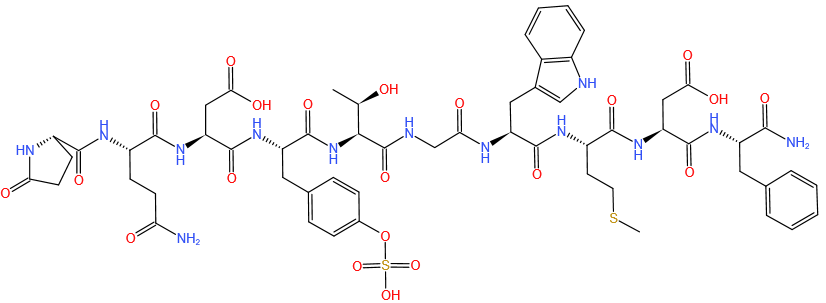
Figure 1: Molecular structure of caerulein (CAS NO.17650-98-5)
The caerulein-induced AP model has been successfully applied to establish AP models in rats, mice, dogs, and Syrian hamsters, among other animals. This model aids in describing the processes of autophagic damage, pathological calcium signaling, and endoplasmic reticulum stress, which are central to the pathogenesis of AP. The severity of acute pancreatitis can be increased by adjusting the dosing regimen of caerulein.
The steps for inducing AP using caerulein
Preparation of caerulein
Dissolve 1 mg of caerulein in 1 mL of physiological saline to prepare a 1 mg/mL stock solution. Sterilize by filtering through a 0.22 μm membrane filter and freeze for storage. Prior to use, thaw the stock solution and dilute with physiological saline to prepare working solutions of 5 μg/mL or 10 μg/mL.
Animals
Caerulein can induce AP in most animals, but such models are primarily applied in rodents (such as rats and mice).
Administration
Caerulein-induced AP is mainly edematous and is often used in the study of mild AP and the transition from mild AP to severe AP (SAP). When inducing severe AP with caerulein, it is often combined with lipopolysaccharide (LPS). LPS disrupts the normal response of inflammatory mediators, leading to the development of local pancreatitis into systemic severe inflammatory reactions, exacerbating pancreatitis induced by caerulein.
Caerulein is administered by intraperitoneal injection seven times at 1-hour intervals (20-100 μg/kg, commonly used concentration: 50 μg/kg), with LPS (10 mg/kg) injected simultaneously during the last dose.
Model assessment indicators
1. Elevated serum amylase and lipase activity;
2. Increased serum NO concentration;
3. Pancreatic histopathology examination: pancreatic tissue edema with vacuoles, inflammatory cell infiltration, accompanied by a small amount of acinar cell necrosis, and possible bleeding;
4. Increased expression levels of inflammatory factors in serum and pancreatic tissue.
Model advantages
The method is simple, easy to replicate, has good reproducibility, and is non-invasive.
Arcegen provides high-quality Caerulein (C331603E) to support research on acute pancreatitis!
Application case of C331603E Caerulein
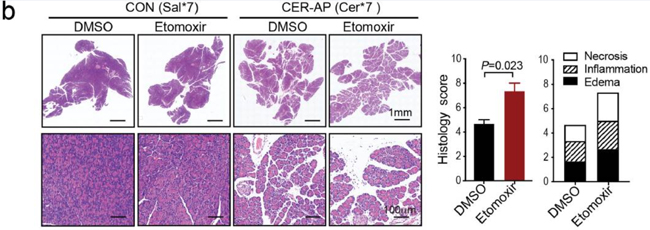
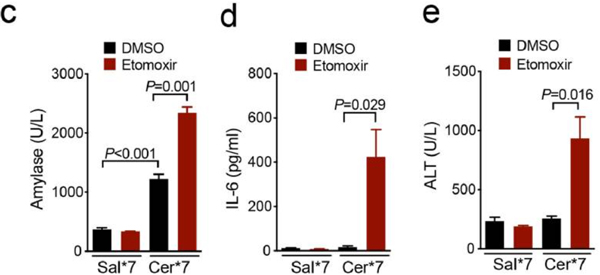
Figure 2: Arcegen Caerulein (Cat#C331603ES) - Related Results of AP Modeling in Balb/c Mice (PMID: 35339899, IF: 5.736)
Balb/c mice were intraperitoneally injected with 50 μg/kg of caerulein (Arcegen, Cat#C331603ES) at 1-hour intervals for 7 times, with simultaneous injection of LPS (10 mg/kg) during the last dose to induce SAP. Histological images of pancreatic H&E staining and histological scores (b), as well as serum levels of amylase (c), IL-6 (d), and ALT (e), were evaluated.
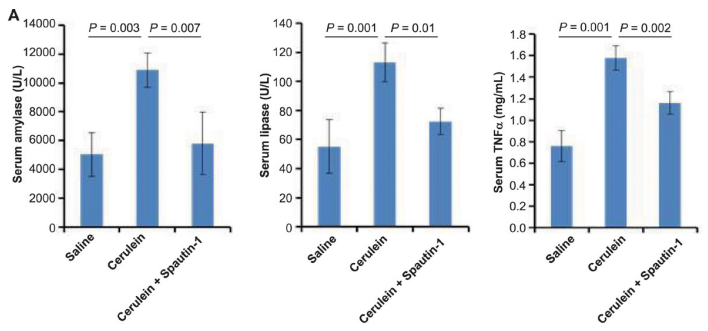
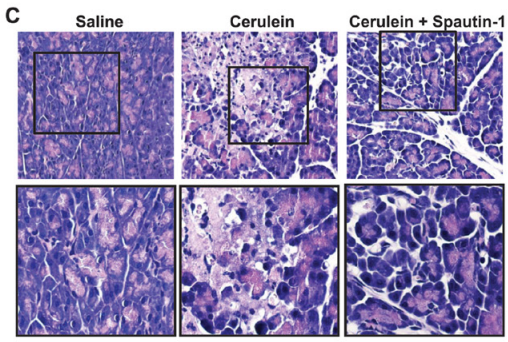
Figure 3: Arcegen Caerulein (Cat#C331603ES) - Related Results of AP Modeling in Kunming Mice (PMID: 27579473, IF: 4.096)
Female Kunming mice were intraperitoneally injected with 4 doses of 50 μg/kg caerulein (Arcegen, Cat#C331603ES) at 1-hour intervals to induce AP. Levels of serum amylase, lipase, and TNFα (A), as well as pancreatic H&E images and histological scores (C), were evaluated.
